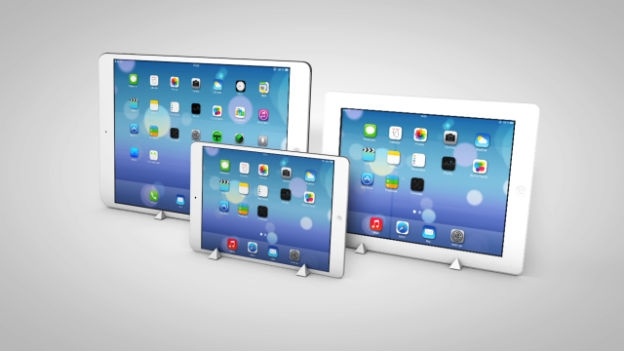Yes, the Apple iPad Pro could be a possibility: and it won't compete with the MacBook
This summer, there have been many indications that Apple is looking to experiment with designs and concepts that are less typical, in respect to what consumers have come to expect from the tech giant.

Prior to the WWDC 2015, Apple took some bold decisions with the new 12 inch MacBook, however, it weren’t until the developer’s conference keynote that we began to see glimmers of just how deeply the company is changing, with the first clue being iOS 9. Not many expected iOS 9 to actually feature a split screen functionality, and that simple, brand new ability, is very telling of how much the company is willing to veer off the beaten path.
Further evidence provided by the U.S Patents Office, shows many other designs that could make their way to consumers, sooner than expected, such as a stylus, a smart cover with built-in multi-display functionality, a modular MacBook, and perhaps, even augmented reality, at least according to the recent news of Apple purchasing a notable German augmented reality firm.
With virtually every other competitor, especially Microsoft, building devices offering functionality that crosses multiple thresholds, from ultra-mobile to desktop-class features, there is no reason for Apple not to consider alternate paths for its future products, and the only obvious reason for holding back, is careful planning.
By that token, Apple is not about to playing it “safe”, but rather playing it smart, in that every brand new product that is offer to the public, must have a market. The 12 inch MacBook Retina was not designed to eat away at the MacBook Air, and it hasn’t, because from design, to user experience, the new MacBook is designed to offer something that the MacBook Air, or the MacBook Pro, can’t offer.
From the standpoint that every Apple product has a specific market it caters to, where does a 12.9 inch iPad with a stylus fit?
By looking at Apple’s trend in acquiring and revising its patent portfolio, the logic is that Apple is looking to create something new, and the timing couldn’t be perfect. The original iPad Mini has been retired, which marks the end of an era. On the opposite side of the spectrum, Force Touch and the Retina display are making their way across all the MacBook line, and ultimately, with iOS 9, the iPad is about to bestow users with the ability to open and use multiple apps.
By this token, an iPad as big as a MacBook, with or without stylus, fits perfectly. Regardless of the size, the iPad Pro, (for lack of a more solid lead on the name), will still be an iOS device, it will still run full screen apps, and it will still be just as easy to use as any regular iPad.
There are those who are concerned with a larger iPad’s ability to eat away at the 12 inch MacBook’s market share, or even the MacBook Air, however, there is no practical evidence of such thing ever happening, because neither an oversized iPad, not any MacBook, are meant to enter in competition with 2-in-1 devices like the Surface Pro. Yes, they are meant to offer an alternative way to do things, but the fundamental choice from a consumer’s point of view is not between a Microsoft Surface and an iPad Pro. As it often comes down to, the choice is between what users already know, and what they are willing to try for the first time.
Yet, as Steve Jobs would have said, there is one more thing:
“...The issue is that enterprises, generally speaking are only deploying iPads to a small percentage of their workforce. And so the real opportunity is to bring mobility into the enterprises and change how people work....”
Tim Cook was quoted saying the above, at an earning call in January of this year, while talking about his plans about business applications, through the partnership with IBM. Enterprise is the very clue that leads us to believe that Apple is not only going to build a larger iPad, but it will take what we have seen at WWDC 2015, and enhance it to ensure that it fits the specific requirements of enterprises, across a wider array of pay grades, and in line with Tim Cook’s words.